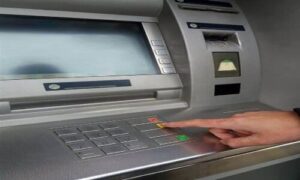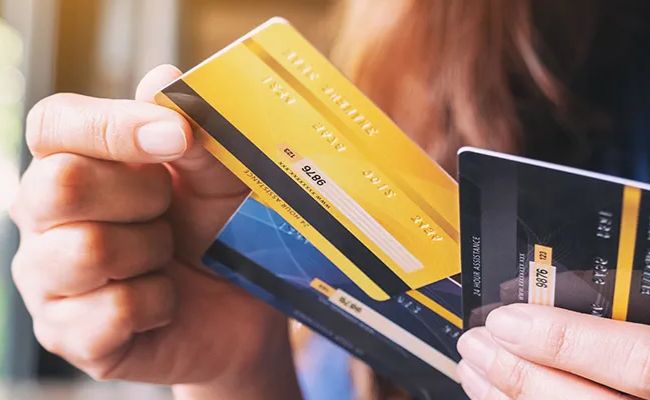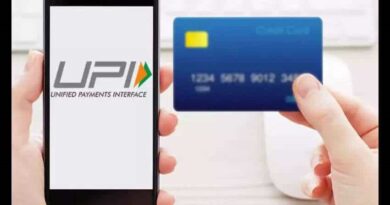ARE BANK CARDS GOING TO BE A THING OF THE PAST..??

The Reserve Bank of India’s (RBI) push to enable Unified Payments Interface (UPI)-backed cash withdrawals from ATMs is likely to cause a severe dent in the usage of debit cards, according to payment industry executives. Already a preferred mode of payments at storefronts and for small-value online transactions, UPI is now set to eat into the debit card’s last-remaining bastion of cash withdrawals. Now that the payments landscape is abundant with innovative digital solutions that require nothing but a smart device at hand to make a purchase, many begin to wonder: are debit and credit cards becoming outdated?
At Rs 19.64 trillion, the value
of merchant UPI transactions in April 2024 was well above the value of debit and credit card transactions at point of sale (POS) terminals. According to a recent report, UPI accounts for nearly three-fourth (70%) of all transaction volumes below Rs 500.
Banks’ issuance of debit cards had seen significant growth over the last five to seven years, reaching 935 million outstanding cards as of December 2022. This may now start to flatten out as a consequence of high UPI use for merchant payments and saturation in card issuances.“Also, with the announcement of interoperable card-less ATM cash withdrawal facility, using UPI based authorisation, as

opposed to card and PIN based authorisation, and to allow activation of UPI via Aadhar OTP in lieu of a debit-card-linked OTP, the need for debit cards will be further diluted, and debit card numbers could likely start to shrink over the next few years.
Cash withdrawals at ATMs are the chief means of usage for a majority of debit cards issued in India, with merchant payments using debit cards starting to plateau and even seeing volumes falling on a year-on-year basis. In February 2024, the number of debit card-based ATM transactions fell to 520 million from 551 million in February 2023.
Independent fintech expert Parijat Garg said that it may take banks a few months to upgrade their ATMs and other systems at the back end to offer UPI-based withdrawals. But once that happens, the utility of debit cards for a large number of customers will practically be gone.
However, lately, the center-stage position of this payment method is being questioned by some of the main reasons like:
The rapidly growing popularity of digital payments: The COVID-19 pandemic has highlighted the importance of alternative payment options in the modern world. As a result, innovative contactless methods like digital wallets, QR codes, and P2P payment apps gained prominence.
Cards’ susceptibility to fraud: Despite advancements in security features, traditional bank cards are still susceptible to fraud and unauthorized transactions. They also face a risk of being lost or stolen.
Sustainability concerns: The environmental impact of producing and disposing of plastic cards is a growing concern. As sustainability becomes a key focus globally, more and more card issuers are facing pressure to optimize their processes.
“Only the online payments where people may not be too comfortable using UPI on a particular device or where it’s quite a large-value transaction or where the person is leveraging the benefits available on a particular debit card, such as debit EMI, might be the instances where a debit card is used,” Garg said.
Consumers may eventually see no point in carrying debit cards as there is an annual or quarterly fee for maintaining them but UPI is practically free. Garg pointed out that merchants also prefer UPI because it does not draw a merchant discount rate (MDR), but on debit cards at POS merchants have to pay around 1%. “The consumer demand for debit cards may eventually fall and banks may also find it costly to issue them in a scenario of low usage.

WHERE THE DEBIT CARDS HAVE BEEN ?WHERE ARE THEY GOING?
There’s no doubt that debit cards will remain a popular payment type. However, what the future holds in store for the debit card depends largely on how cardholders of the future are inclined to make transactions. Let’s take a look at two ways debit cards are already adapting to their cardholders’ changing preferences.
As debit cards directly access a cardholder’s bank account, maintaining control of funds is of the utmost importance. EMV has helped curtail in-store fraud, but hasn’t thwarted fraud in online payments and other card-not-present situations. The introduction of card controls that give cardholders a greater ability to track card use and monitor their spending has been effective in helping fight this type of fraud.
Advanced card control apps offered by different bank’s and financial institute, allow cardholders to manage their cards directly from their mobile device. Cardholders can elect to receive real-time transaction updates, notifying them of every purchase made on their debit card. Allowing cardholders to set spending limits, designate use locations and geographical parameters, and even require mobile device proximity can have a significant impact on their exposure and vulnerability to both card-present and card-not-present fraud.
But should their card be compromised, cardholders have the benefit of immediate, uninterrupted access to “turn off” their card, both limiting further damage to their account balance and the impact on their financial institution.

Cardless Transactions
GOING CARD-LESS
Removing the physical card from the payment equation might seem like the end of debit cards altogether. However, syncing smartphone technologies with the functionality of the debit card could just be the next step in its evolution. We cant not ignore the contribution of E-wallets which are secure, convenient, and user-friendly payment options that are widely accepted across the globe.
In recent years, we’ve observed a slow shift towards NFC technology that supports the use of mobile wallets. By adopting mobile wallets, cardholders are transitioning their spending process and changing how merchants accept payments. As they begin using mobile wallets for their convenience, consumers are becoming increasingly comfortable marrying innovative payment technologies with sensitive personal information – provided that they feel their information is kept securely. In addition to that introduction of Biometric payments identify users by analyzing their unique physical traits, such as fingerprints, iris scans, or facial features, provides a high level of security without compromising on payment speed and convenience.
Contrary to some commonly held perceptions, mobile wallets are even more secure than EMV chip cards. Built-in security hurdles authenticate the user, which limits fraudulent use before the mobile wallet is even activated. Combining the extra securities of a fingerprint touch ID, six-digit passcode, and the device chip itself, smartphones offer strict user protections in addition to the standard PIN and signature components of debit card usage.
In addition to the advanced security measures of mobile payments, debit cards linked to mobile wallets like Apple Pay, Samsung Pay, and Google Wallet are advancing the convenience of store checkout. Prompting easy and instant payments, mobile wallets simply require a near touch to the merchant’s NFC-enabled point of sale terminal – a transaction more immediate than the exchange of cash. Payment receipts can also be sent and stored automatically to the device, removing the need and hassle of printing multiple customer receipts.
READY FOR THE FUTURE
By adding debit card information to mobile wallet applications on their mobile devices and using apps that monitor debit card usage, cardholders are finding innovative ways to transform the payment process, benefiting not only themselves, but merchants and their financial institutions, too. But just because cardholders are putting down the plastic in favor of newer electronic forms of payment, don’t be fooled into thinking that physical debit card payments will be left behind entirely. As long as consumers value the immediacy and flexibility of a debit payment option – whether in the form of physical card or mobile wallet – debit cards will continue to have a place in future transactions.




